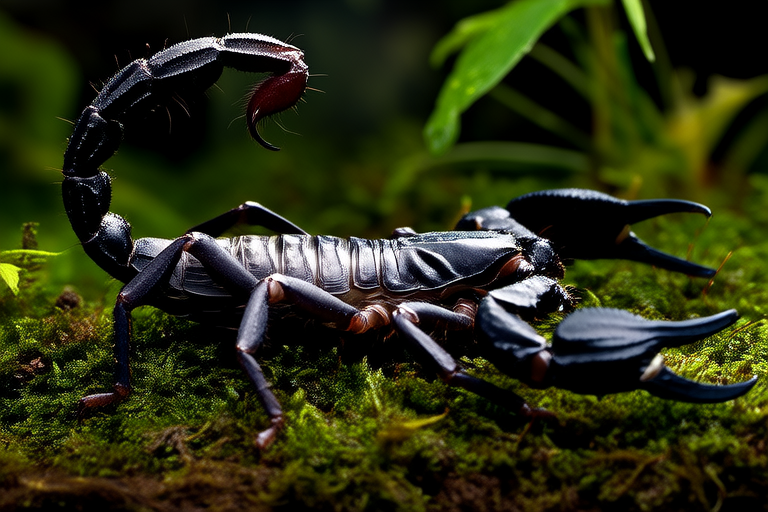
Is the Enigmatic Heterometrus Spinifer Right for You? A Complete Guide
The world of exotic pets is vast and varied, offering unique companions that can captivate and amaze. Among these fascinating creatures, the Heterometrus spinifer, commonly known as the Indian ornamental scorpion, stands out due to its striking appearance and intriguing behavior. This guide will help you understand whether this enigmatic creature is the right pet for you, covering everything from its unique characteristics and natural habitat to care requirements and health considerations.
Introduction to Heterometrus Spinifer
The Heterometrus spinifer is a medium-sized scorpion, typically reaching lengths of around 7 to 10 centimeters. It is easily identifiable by its vivid coloring, which often includes shades of brown, yellow, and red. The most distinctive feature of this species is the prominent spine-like structures on its tail, which give it its name. These spines are not only visually striking but also serve as effective defense mechanisms against predators.
Native to parts of India and Southeast Asia, the Heterometrus spinifer thrives in tropical and subtropical environments. Its natural habitat consists of humid, warm areas with plenty of hiding spots and shelter. Understanding these conditions is crucial for providing your pet with a comfortable and stimulating environment.
Natural Habitat and Ideal Living Conditions
In the wild, the Heterometrus spinifer can be found in dense forests, caves, and rocky outcrops. They prefer environments with high humidity levels, ranging between 60% and 80%, and temperatures that stay within the range of 25°C to 30°C (77°F to 86°F). These conditions must be replicated as closely as possible in captivity to ensure the well-being of your pet.
To create an ideal living space for your Heterometrus spinifer, you will need a terrarium with adequate ventilation and a substrate that retains moisture. Coconut fiber or sphagnum moss are excellent choices for maintaining the necessary humidity levels. Additionally, provide multiple hiding spots such as cork bark, half logs, or small caves to mimic their natural habitat. Proper lighting is also important; a day/night cycle of 12 hours each is recommended.
Dietary Needs and Balanced Diet
Feeding your Heterometrus spinifer a balanced diet is essential for its health and longevity. In the wild, these scorpions are carnivorous, feeding primarily on insects like crickets, cockroaches, and mealworms. As a pet owner, you should offer a variety of these insects to ensure a diverse nutritional intake.
It’s important to feed your scorpion appropriately sized prey to prevent digestive issues. Juvenile scorpions should be fed smaller insects every few days, while adults can be fed larger prey less frequently, typically once a week. Always ensure that the prey is gut-loaded with nutritious food before offering it to your scorpion. Gut-loading involves feeding the insects a diet rich in vitamins and minerals, which they then pass on to your pet.
Care Requirements: Enclosure Setup, Temperature, Humidity, Handling Tips
The enclosure setup plays a critical role in the overall care of your Heterometrus spinifer. The terrarium should be large enough to allow the scorpion ample space to move around and explore. A minimum size of 10 gallons is recommended for a single adult scorpion. For juveniles, a smaller enclosure may suffice, but it should still provide enough room for growth.
Maintaining the correct temperature and humidity levels is vital. Use a thermostat and hygrometer to monitor these conditions and adjust as needed. Heat mats or under-tank heaters can be used to maintain the appropriate temperature gradient within the enclosure. Ensure there is a cool side and a warm side to allow the scorpion to regulate its body temperature.
Handling your scorpion requires caution. While they are generally docile, they can become defensive if threatened. Always handle your scorpion with care, using gloves if necessary, and avoid sudden movements. Regular interaction can help your scorpion become more accustomed to human presence, but never force it into handling if it shows signs of stress.
Health Issues Common to Heterometrus Spinifer and Signs of a Healthy Pet
Like any pet, the Heterometrus spinifer






